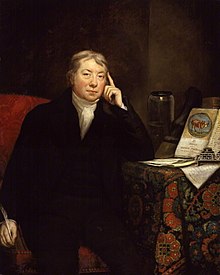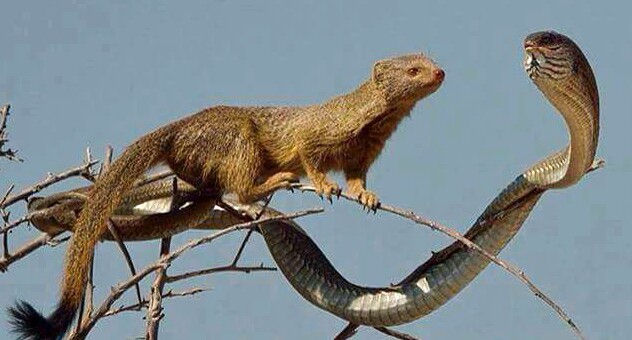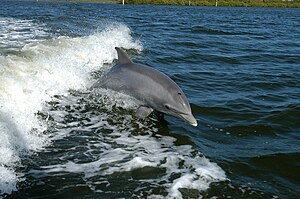WHAT HAPPENING IN OUR WORLD ? DO YOU KNOW ABOUT IT ? I BELIEVE THAT ,IT IS USEFUL TO IMPROVE YOUR KNOWLEDGE. YOU CAN READ ALL THE POSTS IN YOUR LANGUAGE..
Thursday 31 March 2016
Tuesday 29 March 2016
Saturday 26 March 2016
Chulanur - peacock sanctuary in Kerala and India.
Chulanur is a small village in Palakkad district of Kerala state, south India.Chulanur is famous for peacocks and is declared as the peacock sanctuary, only peacock sanctuary perhaps in entire India.If you absolutely want to immerse yourself in the in numerous adventurous activities, visit to Choolanur Peacock Sanctuary in Kerala absolutely a blissful place to be. It is one of the most of advantaged wildlife affluence in Kerala. The Choolanur Peacock Sanctuary is amid 30 km from Palakkad town. Sprawling over 500 hectares of blubbery forest, this altar is a home to about 200 peacocks. There are also Many other Such Birds Location in Kerala for Your Trip. The Major One is Thattekkad Bird Sanctuary Trip. Choolanur Peacock Sanctuary in Kerala offers apartment to assorted and affluent breed of birds. There are over 100 assorted breed of avifauna in the Choolanur Peacock Sanctuary. Avid bird watchers and attributes lovers can analyze the forested regions of the sanctuary. If you are on your Choolanur Peacock altar bout appropriate after the monsoon season, you can atom abundant butterflies. On your Choolanur Peacock Sanctuary tour, don’t overlook to yield camera forth with your to yield aback home a bagful of candied memories of Kerala wildlife altar tours. The Choolanur Peacock Sanctuary is advanced over 485 hectares of forests land from the villages of Peringottukurissi, Chulannur and Thenur in Palakkad district and the Thiruvilwamala-1 viallge in Thrissur district. This sanctuary is amid within the Alathur Forests Range. This sanctuary is home to numerous other birds as well as an herbal garden. Kunchan Smritivanam is a 200 hectare forests area called afterwards the acclaimed artist Kunjan Nambiyar. The 200-hectare of forested area in the sanctuary has been called as Kunchan Samritivanam after Kunchan Nambiar, the abundant Malayalam poet. His birthplace, Killikkurissimangalam, is few km abroad from Choolanur.
Which is a female dromedary camel, credited with being the world's first cloned camel ?
WHICH IS THE FIRST CLONED CAT IN THE WORLD ?
 CC, for "CopyCat" or "Carbon Copy" (born December 22, 2001), is a brown tabby and white domestic shorthair and the first cloned pet. CC's surrogate mother was a tabby, but her genetic donor, Rainbow, was a calico domestic shorthair. The difference in hair coloration between CC and Rainbow is due to epigenetic re-programming, which normally occurs in a fertilised embryo before implantation.
CC, for "CopyCat" or "Carbon Copy" (born December 22, 2001), is a brown tabby and white domestic shorthair and the first cloned pet. CC's surrogate mother was a tabby, but her genetic donor, Rainbow, was a calico domestic shorthair. The difference in hair coloration between CC and Rainbow is due to epigenetic re-programming, which normally occurs in a fertilised embryo before implantation.WHAT IS 'FOOD ENERGY' ?
Friday 25 March 2016
Thursday 24 March 2016
What is a pseudo medicine primarily focused on measurements of the human skull ?
Explain about The scale of a map.
Wednesday 23 March 2016
Who is known as the "father of microbiology"?

Who is known as "the father of immunology" ?

Hazaribagh National Park

Know about -The Chrysler Building

The Arabian ostrich or Syrian ostrich
Embrithopoda ("heavy-footed")- order of extinct mammals

Sunday 20 March 2016
WHAT IS THE TOTAL AREA IF ARABIAN SEA ?
Which is the first dinosaurs to be named ?
Megalosaurus.
Megalosauridae was a family of relatively primitive tetanuran theropod dinosaurs, order Saurischia. They were small-to-large carnivores with sharp teeth and three claws on each hand. Some members of this group were Megalosaurus, Eustreptospondylus, Streptospondylus and Torvosaurus. Megalosaurids first appeared in the mid Jurassic and seemed to have been displaced and replaced by other theropods by the end of that period; their fossils are known from Europe, North America, South America and Africa. They are considered by most researchers (Sereno 2005, Olshevsky 1995, Holtz 2004, etc.) to be close relatives of the spinosaurs.
Classification
Like Megalosaurus itself, the family Megalosauridae, coined by Huxley in 1869, had traditionally been used as a 'wastebasket' group, which included a wide variety of unrelated species (such as Dryptosaurus, Ceratosaurus, Indosaurus, and even Velociraptor). Because of this traditionally polyphyletic use, some scientists, such as Paul Sereno, reject the family name Megalosauridae in favor of Torvosauridae (coined by Jensen in 1985), despite the fact that Megalosauridae has priority under the ICZN rules governing family-level names in zoology.While a 2008 review of Megalosaurus by Benson and colleagues also found that the relationships of Megalosaurus to other theropods could not be determined, and that the assignment of basal spinosauroids to the family Megalosauridae should be discontinued, further work by Benson reversed this position, finding a well-supported Megalosauridae in phylogenetic analyses.
Phylogeny
The clade Megalosauridae was first given a phylogenetic definition by Allain in 2002. According to Allain's definition, a megalosaurid is any dinosaur that shares a common ancestor with Poekilopleuron valesdunensis (since reclassified as Dubreuillosaurus), Torvosaurus, and Afrovenator. In 2004, Holtz and colleagues proposed a new definition: all dinosaurs more closely related to Megalosaurus than to Spinosaurus, Allosaurus, or modern birds (represented by Passer domesticus). In 2005, Sereno rejected the use of Megalosauridae as a clade altogether, due to the fragmentary nature of Megalosaurus, and used the name Torvosauridae instead, using the same definition as Holtz but replacing Megalosaurus with Torvosaurus.
Saturday 19 March 2016
Gavi village in Kerala - India
Gavi is a village in Pathanamthitta district, Kerala, India. It is located 28 km southwest of Vandiperiyar, a town in Idukki on N.H 220, the highway connecting Kollam and Madurai.
Gavi is 14 km south west of Vandiperiyar, 28 km from Kumily, near Thekkady. Gavi is inside the Ranni reserve forest. Gavi is a part of Seethathode Panchayath in Ranni Taluk. Gavi is part of the Periyar Tiger Reserve, and the route can be covered by car from Vandiperiyar. The entrance fee is 25 rupees per person and 50 rupees per vehicle. Cameras are 25 rupees and video cameras are charged 100 rupees. Both day and night stays are available. Forest tent camping is available from November through March.[citation needed]. It has been said that most enjoyable route to Gavi is the way from Pathanamthitta. The rough journey to Gavi may better be made on a sturdy vehicle like a jeep which are available on hire either from Vandiperiyar or from Kumily. Entry passes must be obtained from the Forest Check Post en route at Vallakkadavu. Advance booking with the Kerala Forest Development Corporation Ltd. is highly appreciable wherein such formalities will be taken care of by the company itself.
Botanists have said that "gopher trees" can be seen in Gavi, Kerala. Gavi's forest area, there are two gopher trees and they are believed to be the only two gopher trees in India. The tree, which is identified as gopher, is known as nirampalli. Gopher wood or gopherwood is a term used once in the Bible. There is no consensus about what modern species is meant by "gopher wood".
The tree standing at Gavi forest is of robust stem and lush foliage. According to state Forest Department officials, though the fully-grown gopher in Gavi is the only such tree sighted in the periphery of the jungle, possibly there could be more such trees still surviving in the inner forests of Periyar Tiger Reserve (PTR) in Kerala.
Transport
Air
Trivandrum [TRV] (185 km) Cochin [COK] (190 km)and Madurai [IXM] (186 km) are the nearest airports.
Rail
The nearest railway stations is Chengannur Railway Station (115 km through keekozhoor- mannamaruthi-koottickal-azhutha-vandiperiyar-gavi) and Thiruvalla (120 km) and Theni(99 km) under BG conversion
Road
Gavi is situated around 180km from the state capital Thiruvananthapuram (Trivandrum). Popular route is through the Main Central Road(MC Road) till Valakom, and then to Pathanapuram, Konni, Seethathode, Angamoozhy to Gavi.
Other routes from Gavi are as below: - Chittar - Seethathodu - Angamoozhy - Moozhiyar - Kakki Reservoir - Anathode Dam - Pamba Reservoir - Kochu Pamba - Gavi - Pachakanam - Periyar National Park - Kozhikanam - Vandiperiyar
There is a demand for another road connecting Gavi with Pathanamthitta, Vadasserikara,Perunad, Laha Plappally, (near Sabarimala), Angamoozhy, Moozhiyar,Kochu Pamba - Gavi.
Regular buses are available to Vandiperiyar from Kottayam and Thiruvananthapuram. A small bus rattles even up to Gavi from Vandiperiyar. KSRTC service is available both from Kumaly and Pathanamthitta (Pathanamthitta-Perunad-Muzhiyar-Kakki-Gavi-Kumily bus route from chengannur-pathanamthitta-Perunad-Muzhiyar-Kakki-Gavi) (direct buses not available) KSRTC is operating an Ordinary Bus from Pathanamthitta to Kumali via Gavi and vice versa. Click here for more details.
Read about the river frog.
The river frog (Rana heckscheri) is a species of aquatic frog in the family Ranidae. It is endemic to the southeastern United States. Its natural habitats are temperate rivers, swamps, freshwater lakes and freshwater marshes. It is threatened by habitat loss.
Taxonomy
The correct current name of this species is Rana (Aquarana) heckscheri. Aquarana is a subgenus and is optional in the species name (Hillis, 2007).
The river frog is a large species with adults commonly between 7 and 13 cm (3 and 5 in) in length. The skin is rough and wrinkled but there are no dorso-lateral ridges as there are in the green frog (Rana clamitans). The back is some shade of dark green or blackish-green and the belly is dark grey, or blackish with pale wavy lines and specks. A distinctive characteristic is white spots on the lips, particularly on the lower lip, and this helps to distinguish this species from bullfrogs (Rana catesbeiana) and pig frogs (Rana grylio). Another distinguishing feature is a pale band outlining the groin. Males have a yellowish throat and their tympani (eardrums) are larger than their eyes while those of females are smaller.
Distribution and habitat
The river frog is endemic to the Atlantic and Gulf coastal plains of the southeastern United States. Its range extends southwards from the southern part of North Carolina to southeastern Mississippi and northern Florida. Its typical habitat is marshes and other wet locations with emergent vegetation near streams, rivers, ponds and lakes.
Biology
Adult river frogs have a home range of about 16 square metres (170 sq ft). They are largely nocturnal and feed on insects and other invertebrates, as well as small vertebrates, including frogs. They spend much of their time in water and are relatively bold. During hot weather they are normally found sitting in moist or wet places, presumably to avoid desiccation. When the temperature falls below about 17 °C (63 °F) they are no longer to be seen in their normal habitat and are likely to be seeking refuge from the cold under water.
Breeding takes place between April and August with males calling from the edge of ponds and swamps from April to July. The call has been described as "a deep, low-pitched, rolling snore".[2] The eggs are laid in a floating layer among emergent vegetation, a clutch numbering several thousand eggs which hatch after about three days. The tadpoles are at first a dark color but become much paler over time with a dark edge to the tail fin. They congregate in the shallows in the daytime, sometimes in dense swarms, but move into deep water at night. They feed on both animal and vegetable matter. They remain as tadpoles for a long period, overwintering once or twice, and reaching a snout-to-vent length of 97 millimetres (3.8 in) or more. After metamorphosis, the newly-emerged juveniles are 30 to 52 millimetres (1.2 to 2.0 in) long and move away from the margins of the water. The large number of juveniles compared to the relatively small number of adults indicates a high mortality rate for newly emerged young. Predators that feed on tadpoles and juveniles are thought to include the banded water snake (Nerodia fasciata), other water snakes (Nerodia sp.), the largemouth bass (Micropterus salmoides) and the grackle (Quiscalus sp.). However the skin may contain some noxious substances or malodorous secretions as some snakes, including the indigo snake (Drymarchon), have been observed gagging and retching after eating a river frog. Even after the frog has been regurgitated, the snake continued to wipe its mouth on the ground.
Friday 18 March 2016
Tuesday 15 March 2016
Monday 14 March 2016
Just read about The Cardiac cycle.
The cardiac cycle refers to a complete heartbeat from its generation to the beginning of the next beat, and so includes the diastole, the systole, and the intervening pause. The frequency of the cardiac cycle is described by the heart rate, which is typically expressed as beats per minute. Each beat of the heart involves five major stages. The first two stages, often considered together as the "ventricular filling" stage, involve the movement of blood from the atria into the ventricles. The next three stages involve the movement of blood from the ventricles to the pulmonary artery (in the case of the right ventricle) and the aorta (in the case of the left ventricle).
The first stage, " diastole," is when the semilunar valves (the pulmonary valve and the aortic valve) close, the atrioventricular (AV) valves (the mitral valve and the tricuspid valve) open, and the whole heart is relaxed. The second stage, "atrial systole," is when the atrium contracts, and blood flows from atrium to the ventricle. The third stage, "isovolumic contraction" is when the ventricles begin to contract, the AV and semilunar valves close, and there is no change in volume. The fourth stage, "ventricular ejection," is when the ventricles are contracting and emptying, and the semilunar valves are open. During the fifth stage, "isovolumic relaxation time", pressure decreases, no blood enters the ventricles, the ventricles stop contracting and begin to relax, and the semilunar valves close due to the pressure of blood in the aorta.
Throughout the cardiac cycle, blood pressure increases and decreases. The cardiac cycle is coordinated by a series of electrical impulses that are produced by specialised pacemaker cells found within the sinoatrial node and the atrioventricular node. The cardiac muscle is composed of myocytes which initiate their own contraction without the help of external nerves (with the exception of modifying the heart rate due to metabolic demand). Under normal circumstances, each cycle takes 0.8 seconds.
Which gas is known as 'Marsh gas' ?
Marsh gas, swamp gas and bog gas are common names for biogas which forms in wetlands, whose principal component is methane, produced naturally within some geographical marshes, swamps, and bogs.
The surface of marshes, swamps and bogs is initially porous vegetation that rots to form a crust that prevents oxygen from reaching the organic material trapped below. That is the condition that allows anaerobic digestion and fermentation of any plant or animal material which incidentally also produces methane.
In some cases there is sufficient heat, fuel and oxygen to allow spontaneous combustion and underground fires to smolder for some considerable time as occurred at a natural reserve in Spain.Such fires can cause surface subsidence presenting an unpredictable physical hazard and as well as environmental changes or damage to the local environment and the ecosystem it supports.
Sunday 13 March 2016
which Fish family is known as flying fish.?

Which fish can climb the tree ?

which fish can make electric power ?
 An eel is any fish belonging to the order Anguilliformes , which consists of four suborders, 20 families, 111 genera and about 800 species. Most eels are predators. The term "eel" (originally referring to the European eel) is also used for some other similarly shaped fish, such as electric eels and spiny eels, but these are not members of the Anguilliformes order.
An eel is any fish belonging to the order Anguilliformes , which consists of four suborders, 20 families, 111 genera and about 800 species. Most eels are predators. The term "eel" (originally referring to the European eel) is also used for some other similarly shaped fish, such as electric eels and spiny eels, but these are not members of the Anguilliformes order.Eels are elongated fish, ranging in length from 5 cm (2.0 in) in the one-jawed eel to 4 m (13 ft) in the slender giant moray. Adults range in weight from 30 g (1.1 oz) to well over 25 kg (55 lb). They possess no pelvic fins, and many species also lack pectoral fins. The dorsal and anal fins are fused with the caudal fin, forming a single ribbon running along much of the length of the animal.Eels swim by generating body waves which travel the length of their bodies. They can swim backwards by reversing the direction of the wave.
Most eels live in the shallow waters of the ocean and burrow into sand, mud, or amongst rocks. A majority of eel species are nocturnal, thus are rarely seen. Sometimes, they are seen living together in holes, or "eel pits". Some species of eels also live in deeper water on the continental shelves and over the slopes deep as 4,000 m (13,000 ft). Only members of the Anguilla regularly inhabit fresh water, but they, too, return to the sea to breed.
The heaviest true eel is the European conger. The maximum size of this species has been reported as reaching a length of 3 m (10 ft) and a weight of 110 kg (240 lb). Other eels are longer, but do not weigh as much, such as the slender giant moray which reaches 4 m (13 ft).













